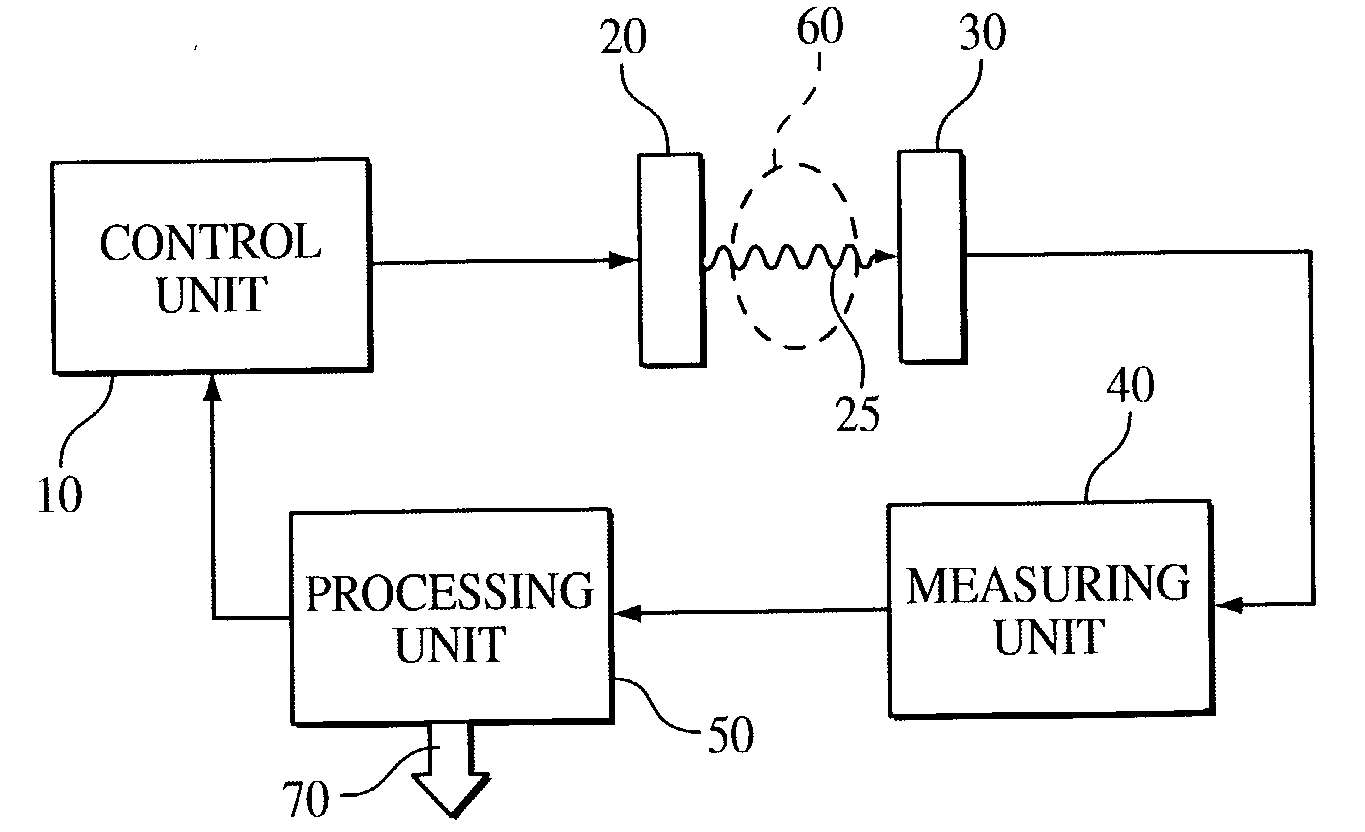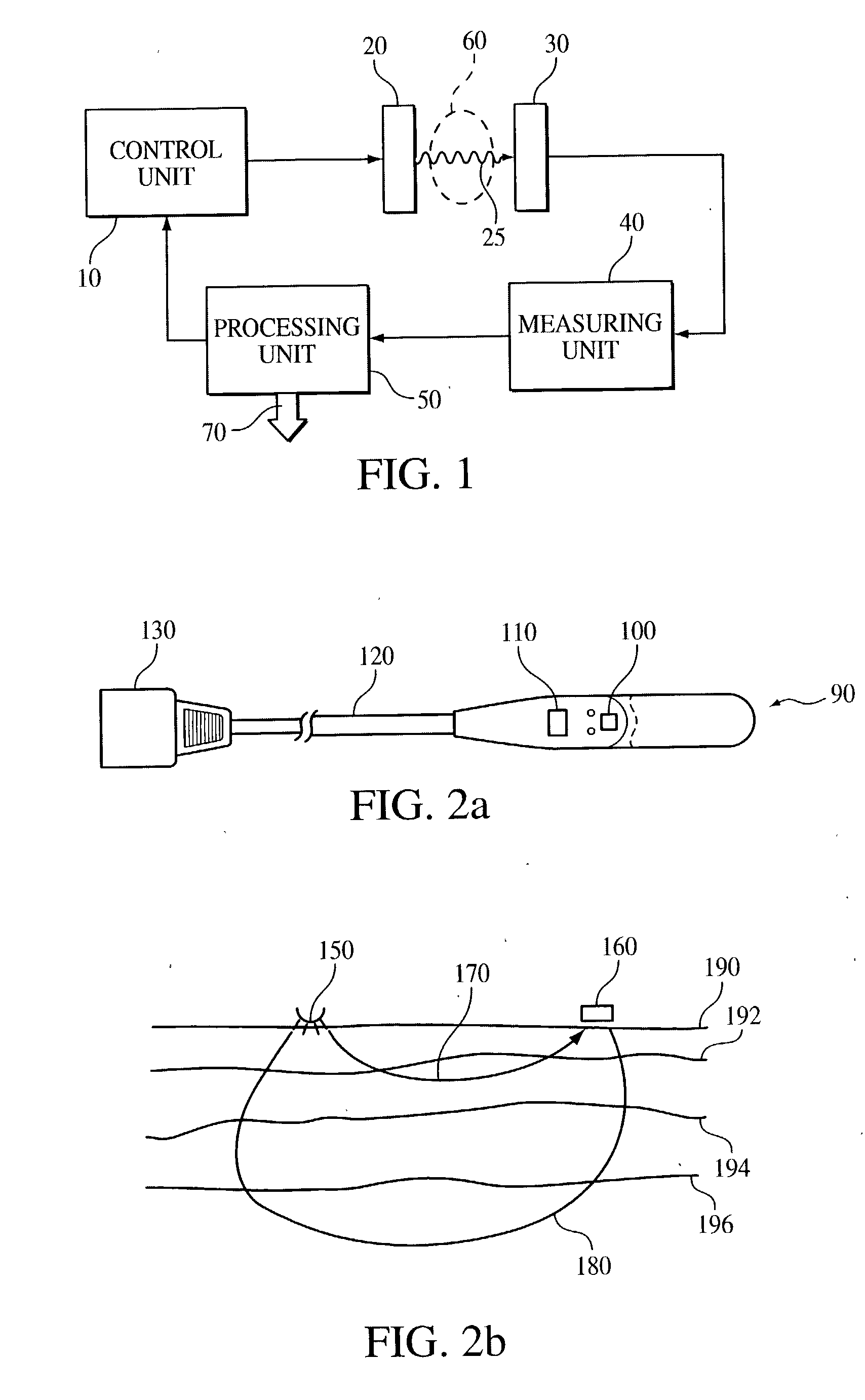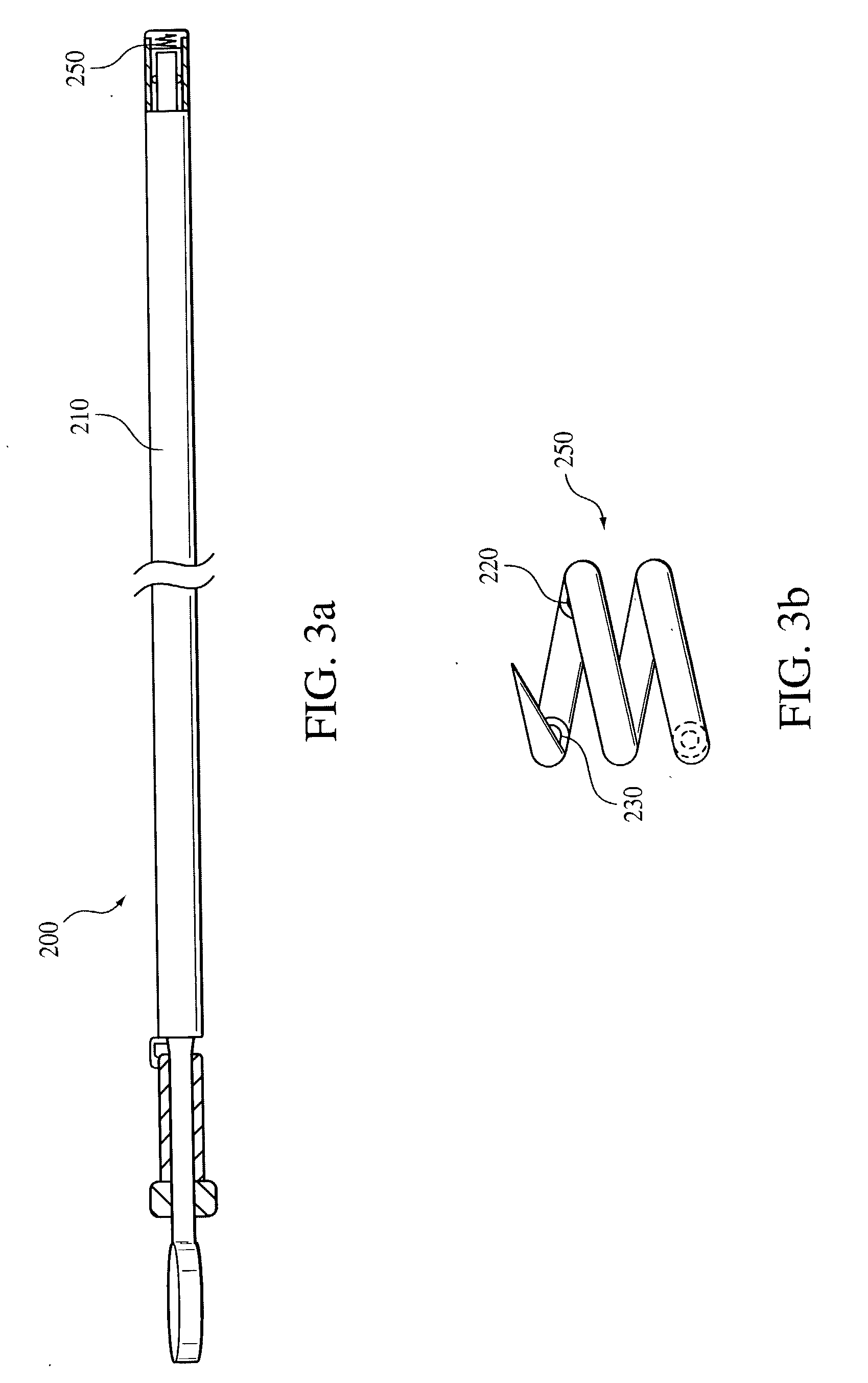Adaptive calibration for pulse oximetry
a pulse oximeter and calibration technology, applied in the field of optical measurement devices, can solve the problems of affecting the accuracy of the oximeter, the current practice of subsuming the scattering and absorption of light in tissue by empirical calibration techniques, and the inability to effectively account for the light scattering and absorption of light in the biological tissues being probed
- Summary
- Abstract
- Description
- Claims
- Application Information
AI Technical Summary
Problems solved by technology
Method used
Image
Examples
Embodiment Construction
[0047] The oximetry measurement devices, calibration systems and methodologies of the present invention are applicable to most, if not all, current oximetry devices and practices. For example, FIG. 1 depicts a block diagram showing the general arrangement of an oximetry system that includes a control unit 10, a light source 20, a light detector 30, a measuring unit 40, and a processing unit 50. Control unit 10 is coupled to light source 20 to activate the transmission of light. To practice the present invention, tissue 60 is positioned between (for transmission oximetry) or against (for reflectance oximetry) light source 20 and light detector 30. In this arrangement, light source 20 outputs light of one or more wavelengths, and preferably two or more wavelengths, wherein at least one wavelength is in the red range and one in the infrared (ir) range.
[0048] Processing unit 50 is coupled to control unit 10 to coordinate the transmitted light and detected light. Light source 20 produces...
PUM
 Login to View More
Login to View More Abstract
Description
Claims
Application Information
 Login to View More
Login to View More - R&D Engineer
- R&D Manager
- IP Professional
- Industry Leading Data Capabilities
- Powerful AI technology
- Patent DNA Extraction
Browse by: Latest US Patents, China's latest patents, Technical Efficacy Thesaurus, Application Domain, Technology Topic, Popular Technical Reports.
© 2024 PatSnap. All rights reserved.Legal|Privacy policy|Modern Slavery Act Transparency Statement|Sitemap|About US| Contact US: help@patsnap.com










